The New Flitescooter is Easy to Operate
FLITESCOOTER Operation
"Foiling Flying Fun"
It was only a matter of time before the creative and visionary forces at work at Fliteboard would have their collective eureka moment and come up with a design and engineering solution for a truly exciting addition to enjoying exciting on-water sports. The company's first product, the Fliteboard, has captured the imagination of enthusiasts all over the world and more than 10,000 units have been sold. These foiling boards were ideal for wake surfers because they had already mastered the skills of balancing and weight distribution on a board.
Enter the Flitescooter.
The Start of Something New: A Brief History
With its DNA deeply rooted in traditional surfboards, wind and kite surfing, boogie and paddle boarding and other water sports, a new idea of a scooter-like, motor-driven board would soon take flight.
A 2008 Master’s program at Sweden’s Royal Institute of Technology saw its project of building an innovative type of water-borne vessel utilizing an electric motor and able to carry a single person at a speed of 15 knots becoming a reality. Its first electric-powered, hydrofoil board, controlled by shifting weight and ridden in a kneeling position, would see the light of day a year later.
Fast forward to 2016, when Fliteboard founder, and sufferer of terminal entrepreneurship, David Trewern, a former kite-surfing world record holder, was participating in a kitefoiling event on a windless day when he thought of marrying an electric motor to a foil. While prototypes by other enthusiasts also began to appear, Trewern and his team, headquartered in Byron Bay, Australia, worked on getting the batteries light and powerful enough, with a motor mounted right to the wing, underwater, and deliver sufficient speed to lift the board and its passenger.
A year later, Trewern took his foiling board out to Byron Bay’s Belongil Beach, an area rich in Australian aboriginal history, and filmed his first ‘flight.’ He unveiled the website and began to hire personnel.

Today the award-winning company, with 330 worldwide authorized dealers, and offices in Australia, the Netherlands, and the U.S., is in the forefront of efoil technology and continues to transform its products with improved designs in wings, heat sink cooling, interchangeable jet and prop operation, quiet motors, fiberglass construction, and other areas. It also has teaching centers and a battery recycling program.
Construction and Features
With every board made up of hundreds of custom-designed parts, quality control is important, and constant testing is undertaken of many components at the Byron Bay facility before becoming part of a Flitescooter. In addition, specialists and experts from the U.S., Germany, Thailand, and China are often called in to collaborate in the creative process.
Rather than clamping the motor to the mast, an original feature is the company’s patented unibody fuselage. Fabricated from one-piece of aircraft-quality aluminum, this adds strength to the foil but acts as a heat sink and eliminates the need for cooling tubes.
The carbon fiber board body is also built to exacting standards, and whether aboard the grey/silver or the mahogany trimmed model, there is a textured surface to stand on. An inflatable board is also available with a bladder all around the perimeter of the board. According to the company, this allows for extra stability and weight capacity and is compatible with storing on a boat.
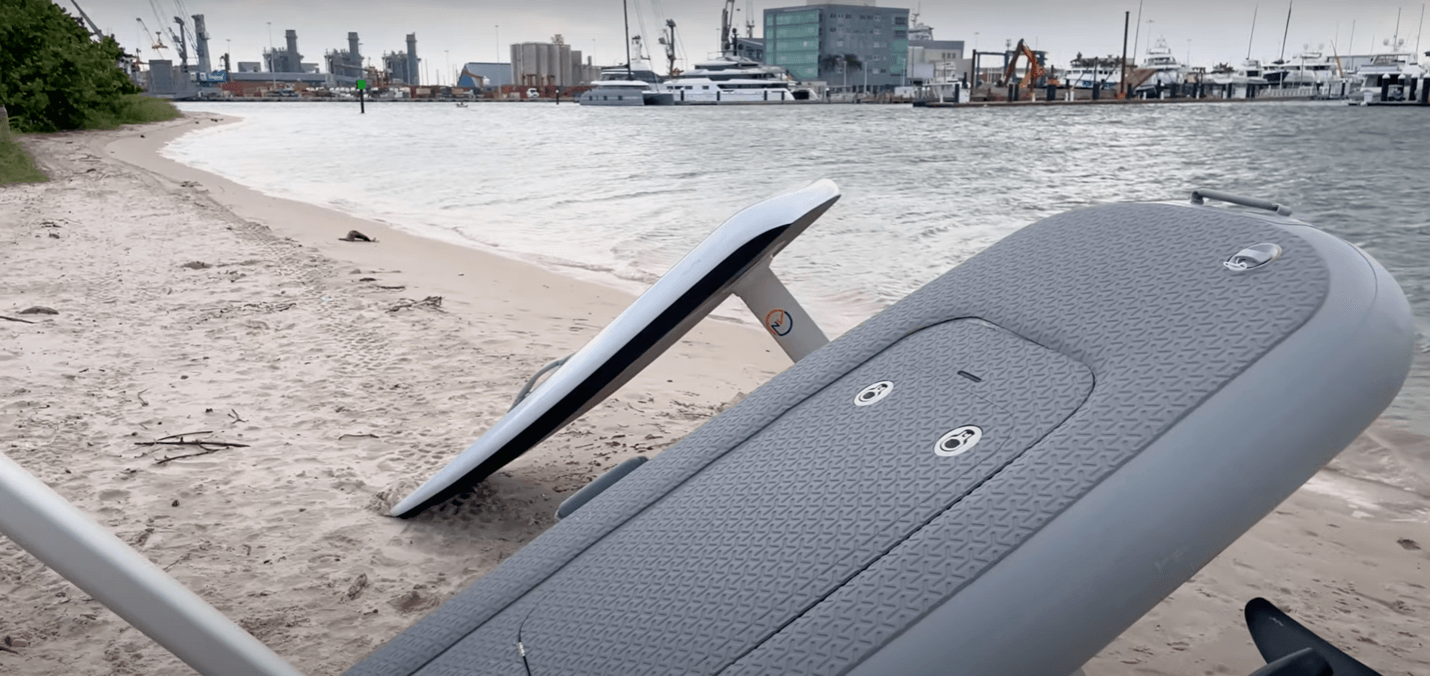
The Flite App allows the operator (or operator's parents!) to designate ‘safe areas’ before setting out for a ‘fly’ by means of geo-fencing. This is a great family-friendly feature.
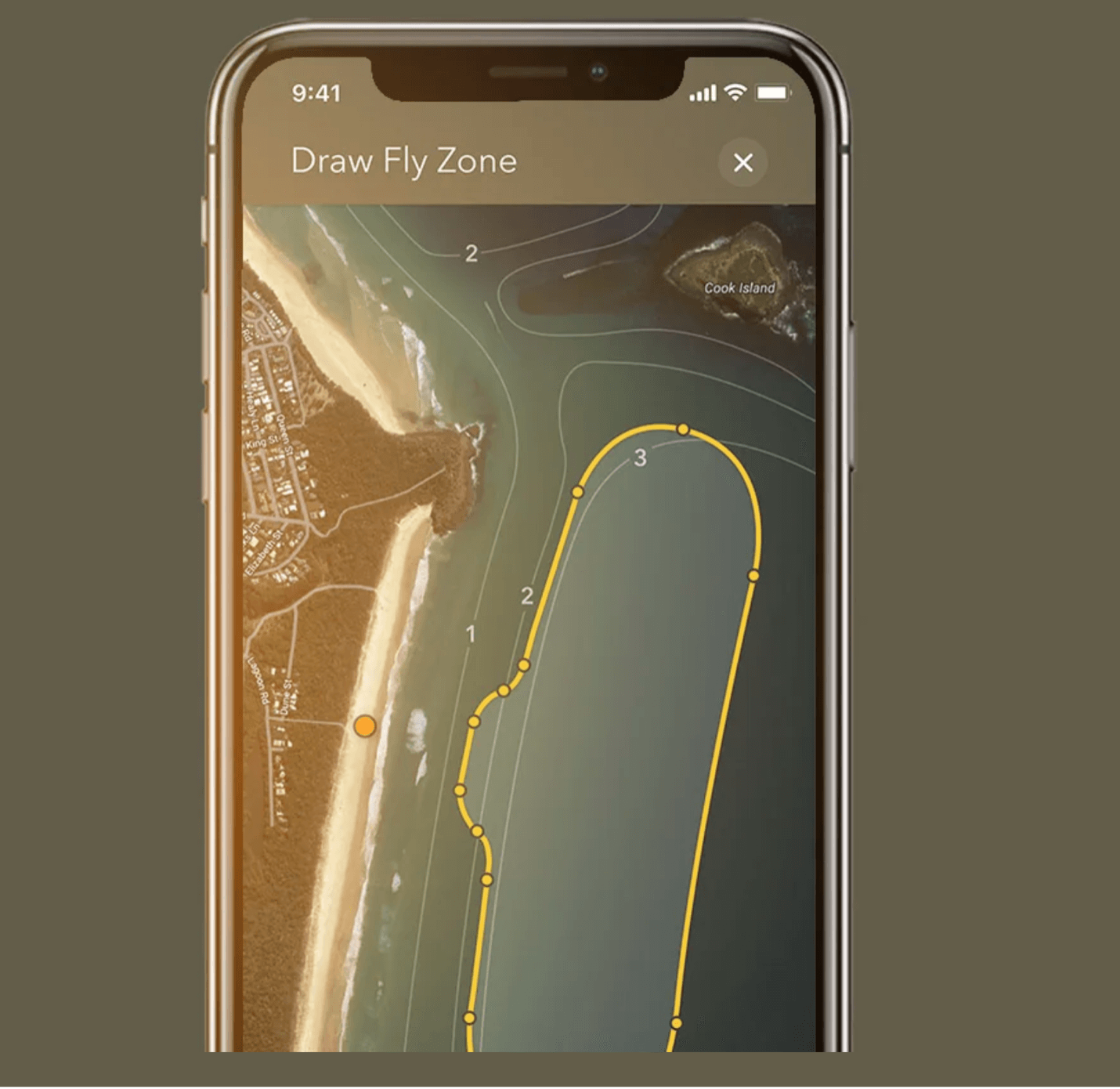
All the electronics and the battery are located in an easy-to-access locking compartment, known as a flight box, and not in the board. The hatch is located right behind the mast. Once opened, the battery terminals are indicated by red and black terminals. There is no current running, not even when the terminals are connected to the battery until the lid is closed and the magnets located at the top make the connection.
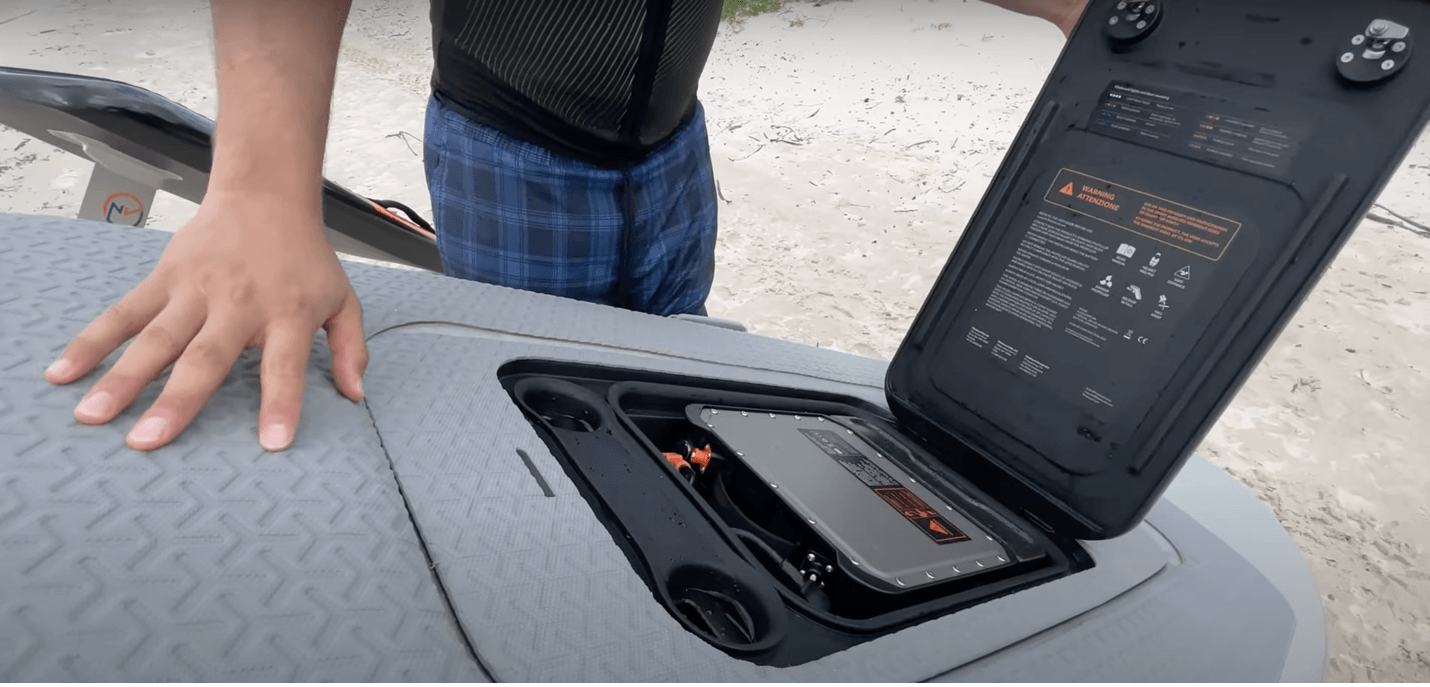
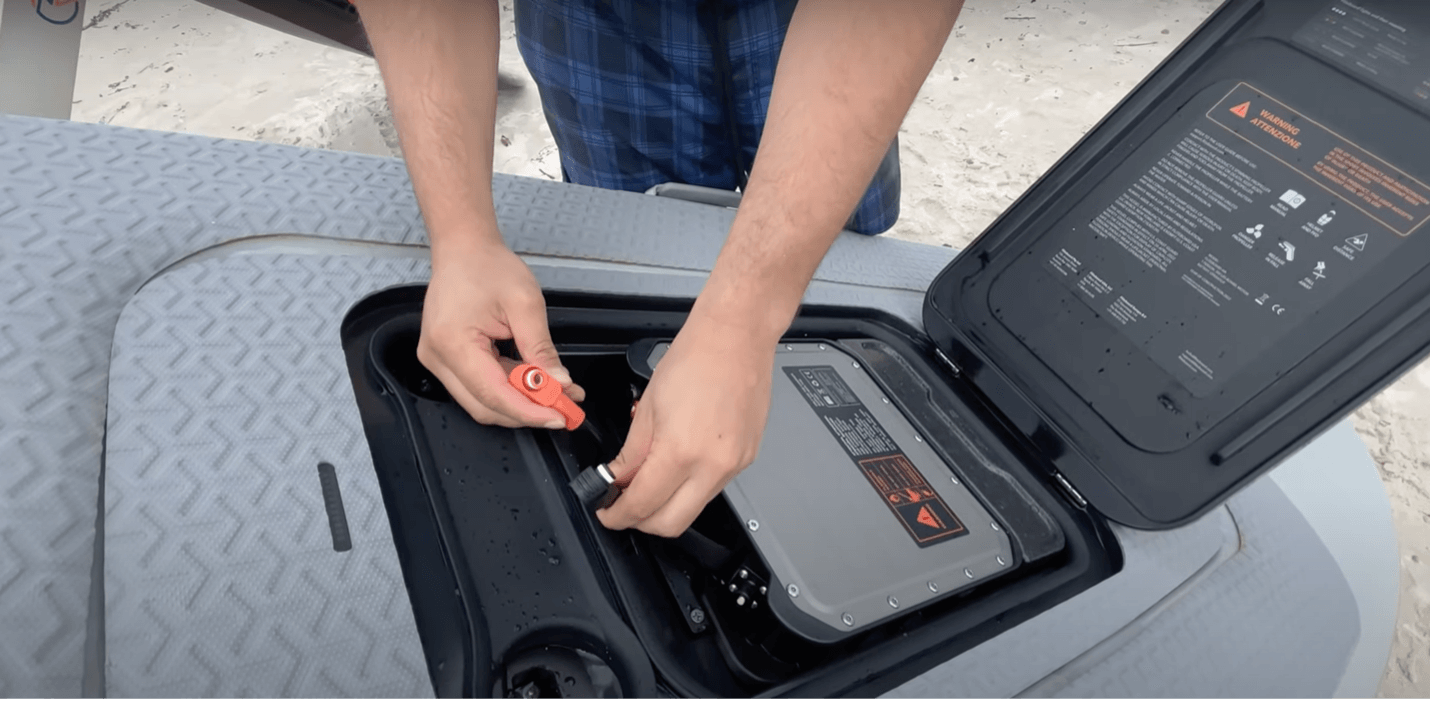
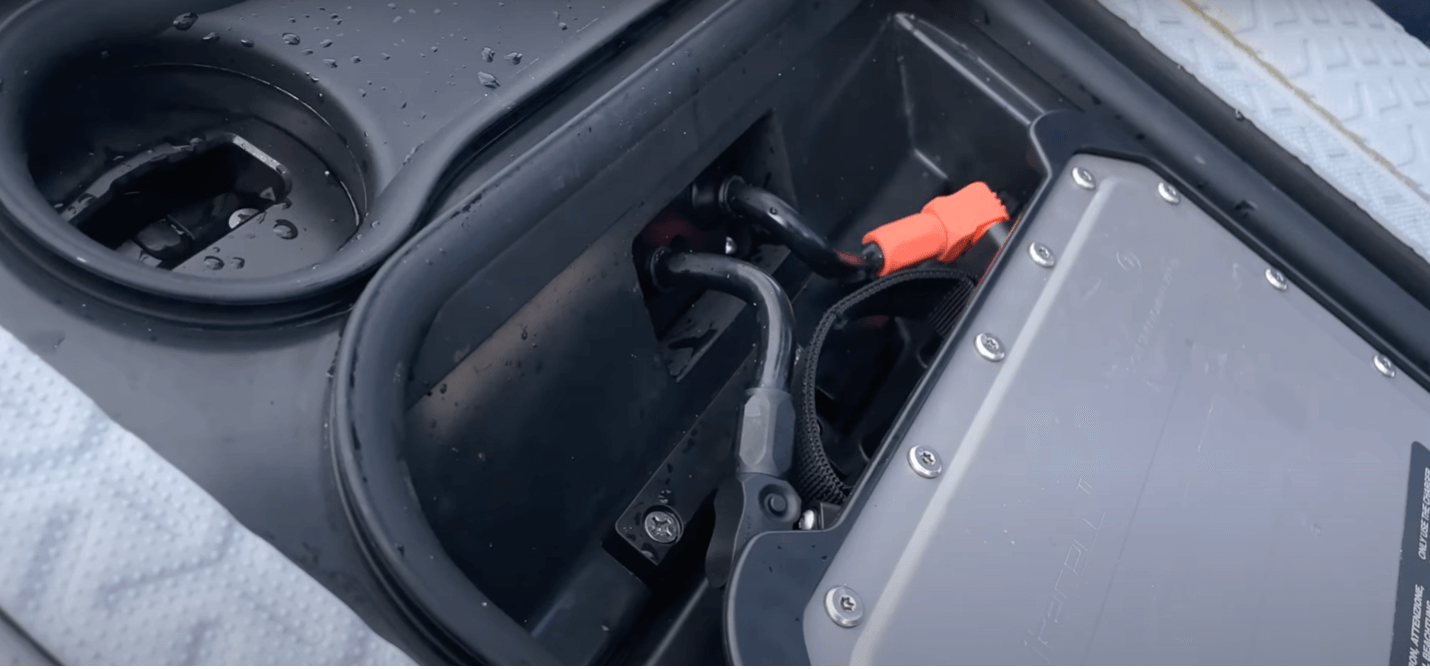

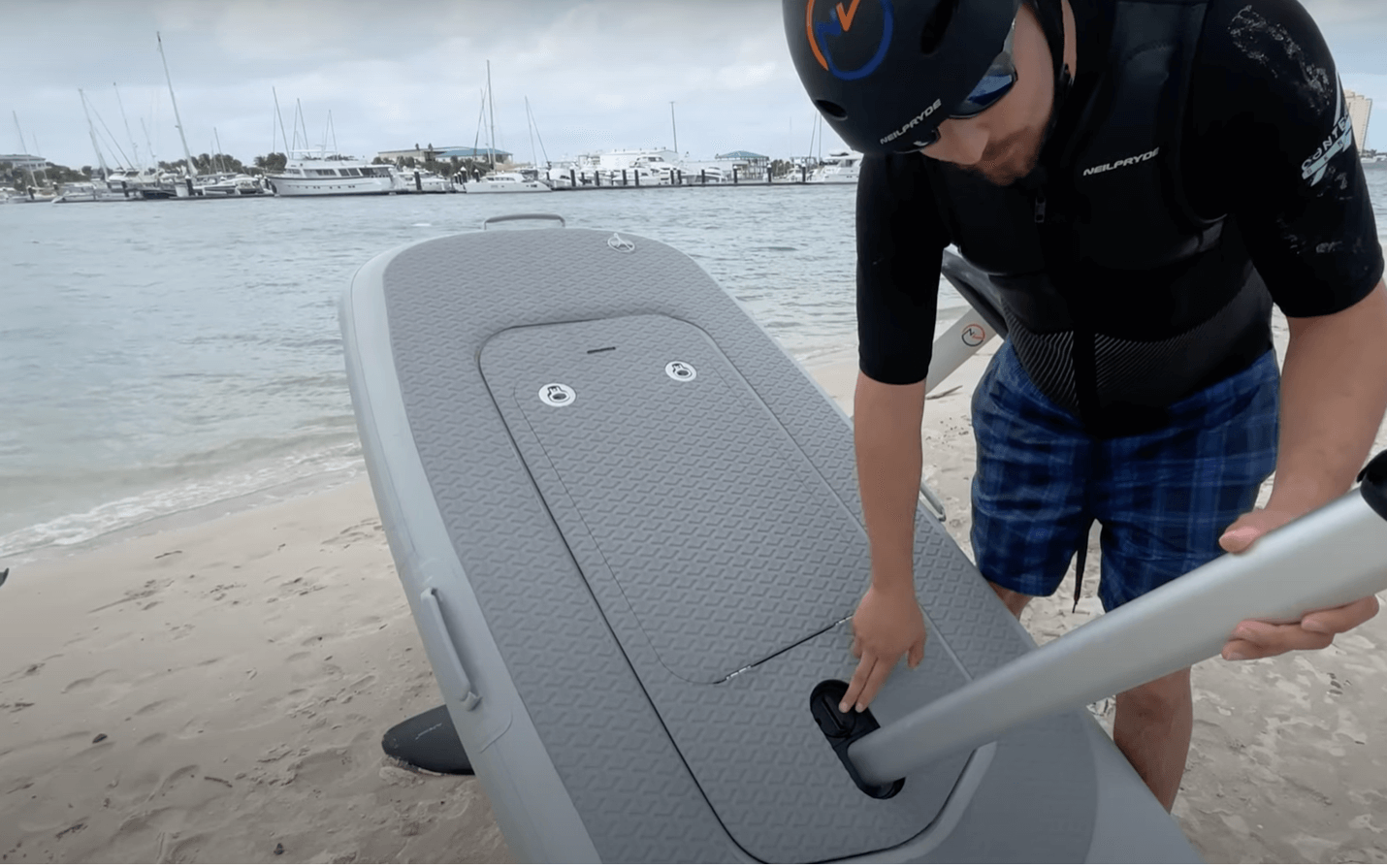
Let's Go Flying
Getting comfortable with the Flitescooter’s controls begins with the safety key kill switch worn on the wrist. When coupled to the flight controller, found at the top of the scooter’s crossbar, acts like the familiar safety lanyard found on many of our boats and jet skis.

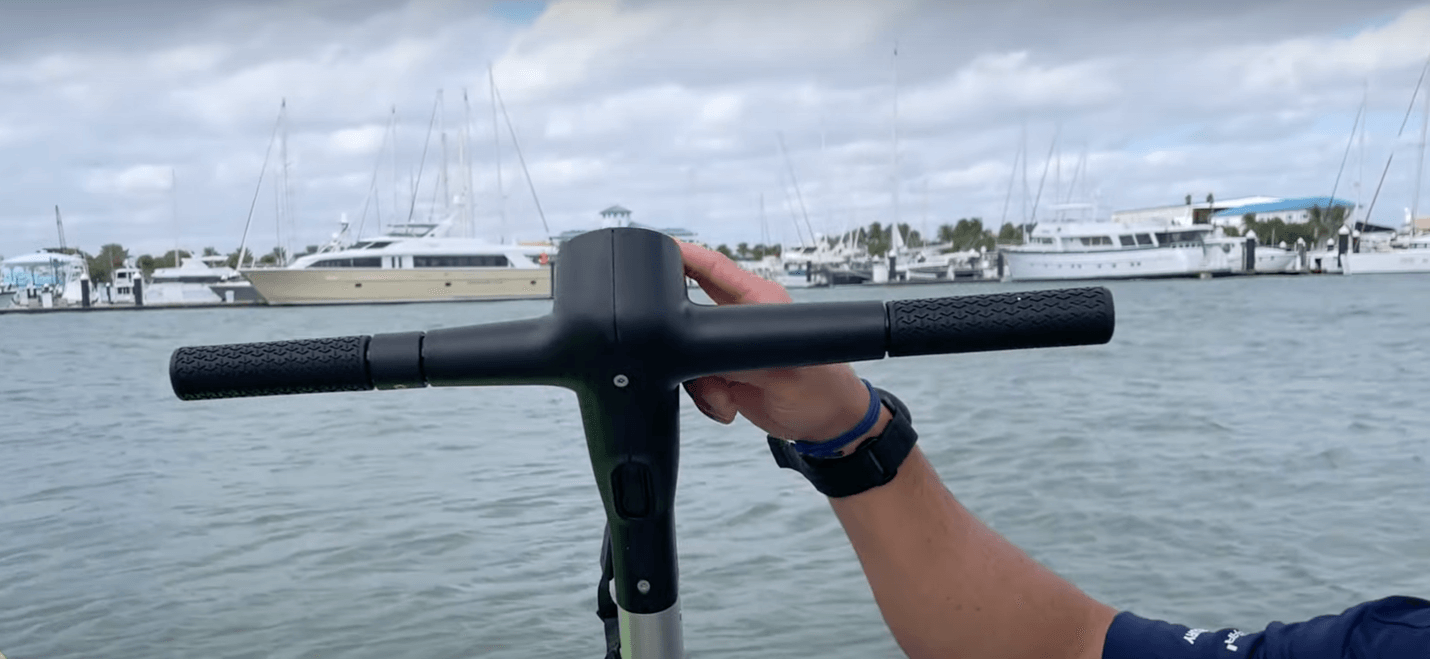
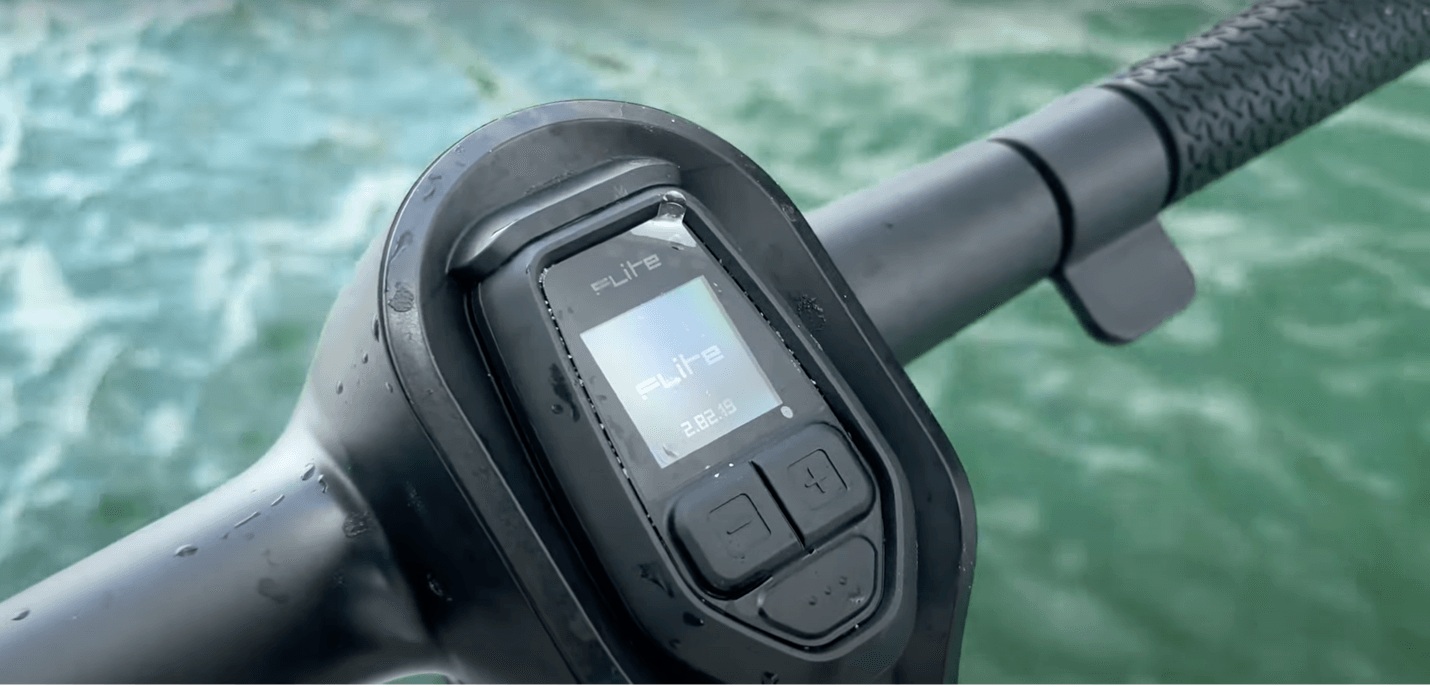
To activate the board, quickly push the throttle down and release, after which there is a countdown beginning from 5 to 0. Again, during the five seconds, quickly push down on the throttle, release, and the scooter is ready to go. If you want to change the speed of the board, use the (+) and (-) keys. The speed can be set to a maximum or cruise in one's comfort zone based on current conditions.
Learning to Operate It
Once you get on the board, your stance will be near the handlebars as there is no need to stagger one foot behind the other on the wide, stable board’s platform. It is recommended, especially with newbies, to ride along the surface without getting the scooter up on its foil and instead, get the ‘feel’ of moving it through the water and learn how to turn by shifting weight. What follows will be a gradual increase in speed, getting the board up on its foil, and settling it back down.
How fast and for how long you can go is up to who is riding. The heavier the load, the more the motor was to work. The Flitescooter Website provides a chart and easy-to-plug-in computations to figure this out.
While the learning curve is mostly easy to navigate, it is highly suggested newbies engage one of the many teaching professionals at your place of purchase to get you going. After a short time, new enthusiasts will be up and ‘flying’ with confidence.

If you’re going to fly on the water, make sure you’re at the controls of a Flitescooter.